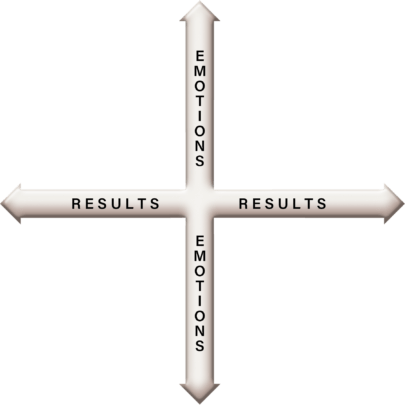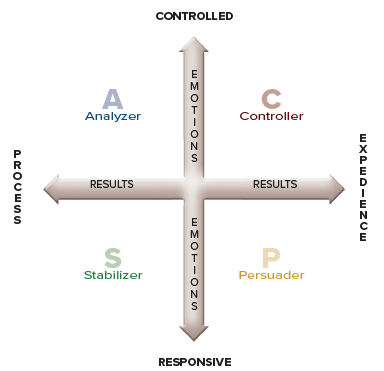
There are two dimensions of observable behavior: Results and Emotions. These two dimensions function independently of one another, which is why they can be observed separately.
The Results Dimension clarifies how an individual goes about accomplishing a task or achieving a result. This dimension ranges from Process-oriented to Expedience-oriented behaviors. We slide back and forth on this line, to some degree, depending on the task and situation.
- Process-oriented individuals tend to pay more attention to how results can be achieved. They are often perceived as deliberate, systematic, and moderate.
- Expedience-oriented individuals tend to pay more attention to the speed at which results can be achieved. They are often perceived as initiating, outspoken and bold.
The Emotions Dimension illustrates the degree to which an individual expresses emotions and feelings when relating to others. The Emotions Dimension ranges from Controlled to Responsive behaviors. We slide back and forth on this line, to some degree, depending on who we are interacting with and the task.
- Emotionally-responsive individuals tend to experience and express their feelings and emotions. They are often perceived as verbal, expressive and informal.
- Emotionally-controlled individuals tend to experience but not express their feelings and emotions. They are often perceived as serious, reserved, and formal.
Together, these two dimensions determine an individual’s Behavior Style.
For example, an individual demonstrating Process-oreinted and Emotionally-controlled behavior is showing the Analyzer Style.

